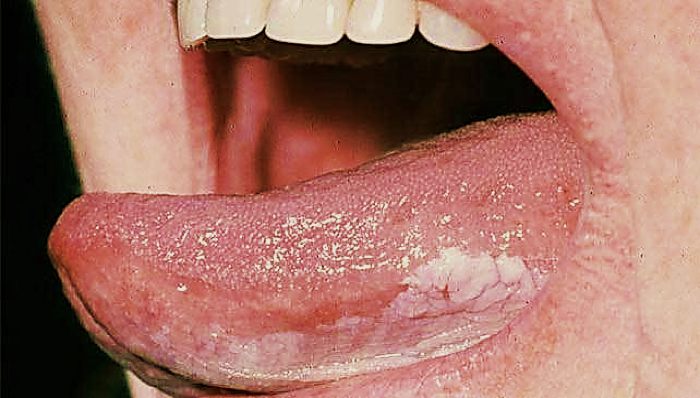

White patch or plaque of squamous epithelium that cannot be characterized clinically or pathologically as any other disease.
1. Predisposing factors:
2. Age:
Can occur in any age but middle-aged (fourth decade) or elderly are more commonly affected.
3. Sex:
Males more frequently affected than females due to smoking and alcohol habits.
Homogenous leukoplakia | Characterized by white patch – surface may be smooth or wrinkled. |
Speckled or nodular leukoplakia | White patches or nodules or nodules on erythematous base. |

Leukoplakia at left lateral border of tongue.